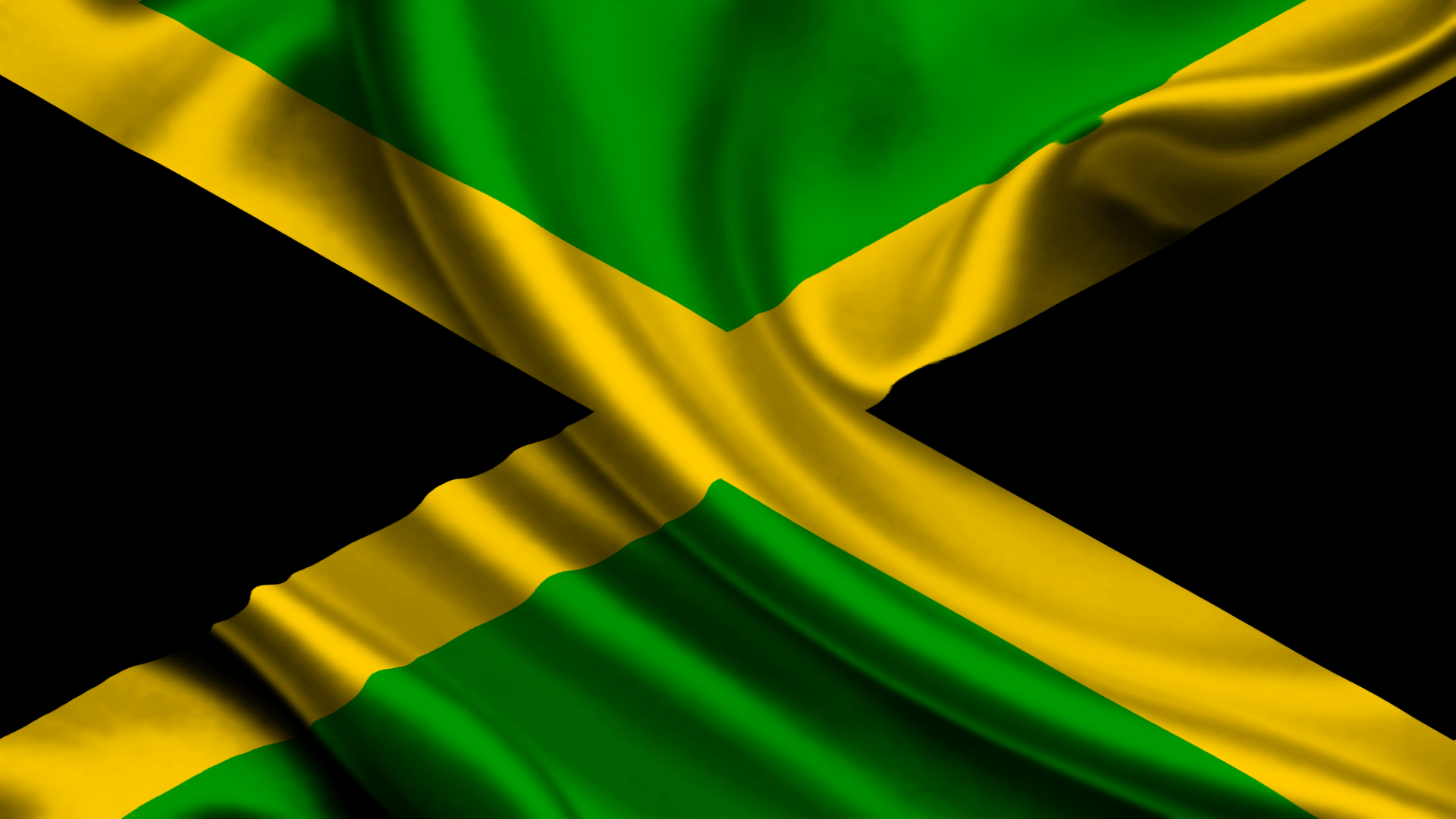
The Story of the Jamaican National Flag

Have you ever wondered what’s the story behind our beloved Jamaican National Flag?
Imagine if instead of the black, green, and gold, we hailed the blue, black and yellow? Or what about saluting the ‘white crocodile’?
As we celebrate Jamaica’s 55th anniversary as an independent nation, it’s time to take a closer look at how Jamaica’s iconic National Flag came to be.

Raising the Jamaican National Flag
Design and Selection
In the months leading up to Jamaica’s Independence, the then Premier, Hon. Norman Washington Manley appointed an Independence Celebrations Committee to oversee the planning of national celebrations.
At the end of September 1961, the decision was made to hold competitions for the selection of a National Anthem and National Flag for Independent Jamaica. An award of £100 would be paid for the accepted design for a National flag. Over 368 entries were received. Several of these original submissions are housed in the Special Collections of the National Library of Jamaica.


At the government’s suggestion, the Independence Celebrations Committee complied a short list of twelve designs to be presented to the Joint Committee of Parliament. This Joint Committee was to select a suitable design for the National Flag from among the shortlisted entries.
However, none of the entries were found to be suitable and the flag was eventually designed by a bipartisan committee of the Jamaican House of Representatives.
A design was approved which featured horizontal stripes but this was later found to be too close in resemblance to the flag of the recently independent Tanganyika (now part of Tanzania). The design was modified to the now familiar black, green, and gold.
The Flag has a diagonal cross or saltire with four triangles in juxtaposition. The cross is in GOLD and the width of each of its bends (arms) is one-sixth of the length of the fly of the flag; the top and bottom triangles are in GREEN; and the hoist and fly triangles are BLACK. The exact shade of green used in the Flag is Emerald T8 17, British Admiralty Bunting Pattern…The National Flag came into use on 6 August 1962, Jamaica’s Independence Day. (Needham, 9)
Jamaica’s is one of only two current national flags that do not include the colours blue, white, or red (the other is Mauritania’s).
Interpretation
The official interpretation of the Jamaican National Flag is ‘The sun shineth; the land is green; and the people are strong and creative’. The colour green represents hope and Jamaica’s abundant agricultural resources. Gold is associated with the natural beauty of the sunlight and wealth of the country. Black represents the strength and creativity of the nation’s people.

The original association of black with the ‘hardships overcome and to be faced’ by the Jamaican people was eschewed in February 1996 by a committee appointed to review and report on Jamaica’s National Symbols and Observances. Under the chairmanship of the late Professor the Hon. Rex Nettleford, OM, OCC, the committee opted to adjust the official interpretation for what was seen as a more positive and optimistic view of the colour black in the National Flag.
“the Committee came to realize that many Jamaicans make a link between themselves and the colour black and are affronted by the negative association with hardships.” (Report on National Symbols and National Oberservances, 13)
Today, the Jamaican National Flag continues to be a symbol of national pride and community cherished by Jamaicans all over the world. The phenomenal global success of the nation’s athletes and musicians has catapulted the flag to iconic world status.

Usage and Flag Code
The National Flag Code lays out guidelines for the correct display and handling of the Flag. Below is a selection of the regulations:
- The National Flag should be regarded as the sacred emblem of the nation. When faded or otherwise in need of replacement, it is to be burnt (privately) and not used for any other than its original purpose.
- It is never to touch the ground or the floor
- No other flags should be larger than or placed above or to the right of the National Flag except at foreign diplomatic missions or consulates. (International usage forbids the display of the flag of one nation above that of another nation in time of peace).
- It is recommended that (at civilian premises) the National Flag be hoisted at 8 a.m. and lowered at sunset (unless it is clearly illuminated by a focused floodlight or spotlight after sunset).
- The National Flag may be flown at half mast (as a sign of mourning), as instructed by the Office of the Prime Minister.
- The Jamaican flag should never be used to drape the coffin of a non-national.
- The flag should not be draped over vehicles of any sort except on that of Military, or Police and on state occasions.
Sources:
A Unique Union Colour? And Your Jamaican Flags by Merrick Needham. Jamaica Military Museum and Library, 2011.
Code For National Symbols Jamaica Information Service, 1973.
Report on National Symbols and National Oberservances, Jamaica Information Service, 1996.
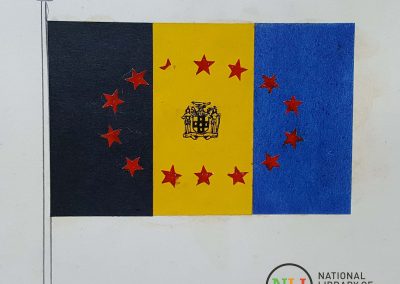
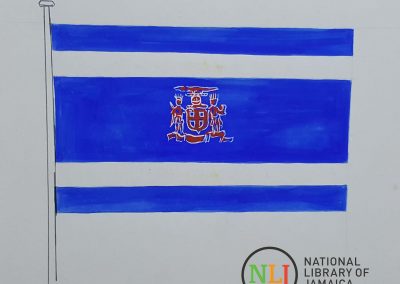
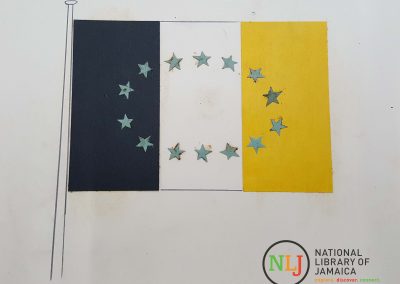
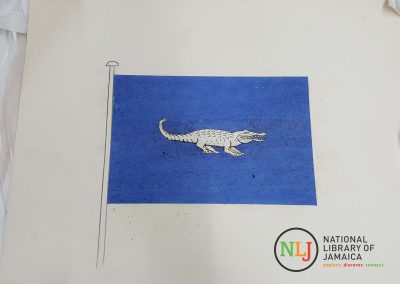
This was such a succinct but engaging article. It is really fascinating to learn of the number of designs received, and then to see the thought that went into the final decision. Also, knowing the regulations on use of the flag is critical. This is just one of the reasons Civics should be re-introduced in Jamaica’s schools.
Mauritania added red
This article is a very precise and accurate information which should be distributed in our schools, especially to sensitize to young children as they are to be sensitize from early as a link has be severed which needs this kind of connectivity.. THANK YOU TO ALL CONCERNED!!
Jamaica has a rich history of which Jamaicans are rightfully proud. The unique National Flag is our nation’s supreme symbol. The official colours are Green, Black, and Gold. I am deeply disturbed by the proliferation of Green, Black, and YELLOW flags even at times of National Celebrations. Their sale should be banned!
I must admit. I am elated to be born in Jamaica. We have experienced Good and Bad and through it all, we still give the ALMIGHTY GOD thanks and praise. “No matter the storm clouds may rock this ship of mine, I shall rest in the arms of the Lord” Song my mom use to sing for us as young children.
Mauritania actually does have red, the official flag has a red stripe on the top and bottom